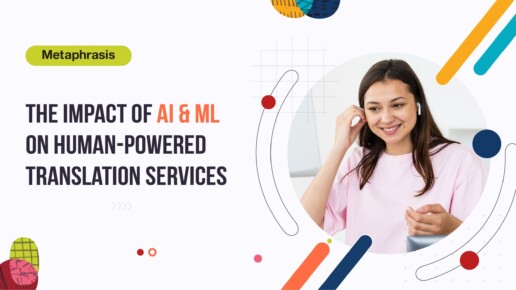The Impact of AI and Machine Learning on Human-Powered Translation Services
In today’s fast-paced world, the impact of technology on various industries is undeniable. One area where this influence is particularly pronounced is in translation services. As we delve into the dynamic interplay between artificial intelligence (AI), machine learning (ML), and human-powered translation, we witness a transformative shift in how languages are bridged and cultures connected.
Evolution of Translation Services
Traditionally, human translators shouldered the responsibility of converting one language into another. However, the landscape is changing with the advent of AI and ML. These technologies are not replacing human translators but rather augmenting their capabilities.
Role of AI in Translation
Automated translation tools powered by AI are becoming integral to the translation process. These tools analyze vast datasets to decipher linguistic patterns, enhancing efficiency and accuracy in the translation of text.
Machine Learning Algorithms in Translation
ML algorithms, the backbone of many AI applications, learn languages by processing and understanding patterns in linguistic data. The adaptability of these algorithms allows for continuous improvement, making them increasingly proficient in language translation.
Benefits of AI in Translation Services
The integration of AI brings forth a multitude of advantages. Speed and scalability are significantly improved, reducing turnaround times and enabling professional translation services to handle larger volumes of content. Moreover, the cost-effectiveness of AI-driven translation ensures optimal resource utilization.
Challenges and Concerns
Despite the promising benefits, challenges loom on the horizon. The potential loss of the human touch in translations raises concerns about the ability of AI to capture the subtleties and nuances embedded in languages. Achieving a balance becomes crucial to maintaining translation quality.
Human-AI Collaboration in Translation
The synergy between human expertise and AI capabilities is a promising avenue. While technology ensures efficiency, human translators contribute the cultural sensitivity required for accurate and contextually appropriate translations.
Impact on Translation Industry
The introduction of AI and ML transforms the roles of human translators. Rather than being replaced, they undergo a transformation, adapting to new responsibilities and skill sets demanded by the evolving industry.
User Experience in AI-Enhanced Translation
From a user perspective, AI-enhanced translation services offer improved accessibility and user-friendly interfaces. Real-time language support becomes a reality, facilitating seamless communication across diverse languages.
Ethical Considerations in AI-Driven Translation
As with any technology, ethical considerations come to the forefront. Bias in algorithms and the potential for unfair translations raise questions about inclusivity and diversity. Striking the right balance is essential for ethical and unbiased language services.
Future Trends in Translation Services
Looking ahead, the future holds exciting possibilities. Advancements in AI and ML will continue to shape the translation landscape, introducing innovations that redefine how we bridge linguistic gaps and foster cross-cultural understanding.
Case Studies: Successful Implementation
Numerous organizations have successfully implemented AI in their translation processes, experiencing positive outcomes. These case studies provide valuable insights into the practical applications and lessons learned from embracing AI.
Adapting to the Changing Landscape
For language professionals, adapting to this changing landscape is paramount. Strategies that embrace technology while preserving the quality and nuances of human-powered translation are essential for staying relevant in the industry.
Conclusion
In conclusion, the impact of AI and machine learning on human-powered translation services is a nuanced and evolving story. Metaphrasis navigate the dynamic landscape, finding the delicate balance between technology and the human touch becomes crucial for delivering high-quality translations that transcend linguistic barriers.

